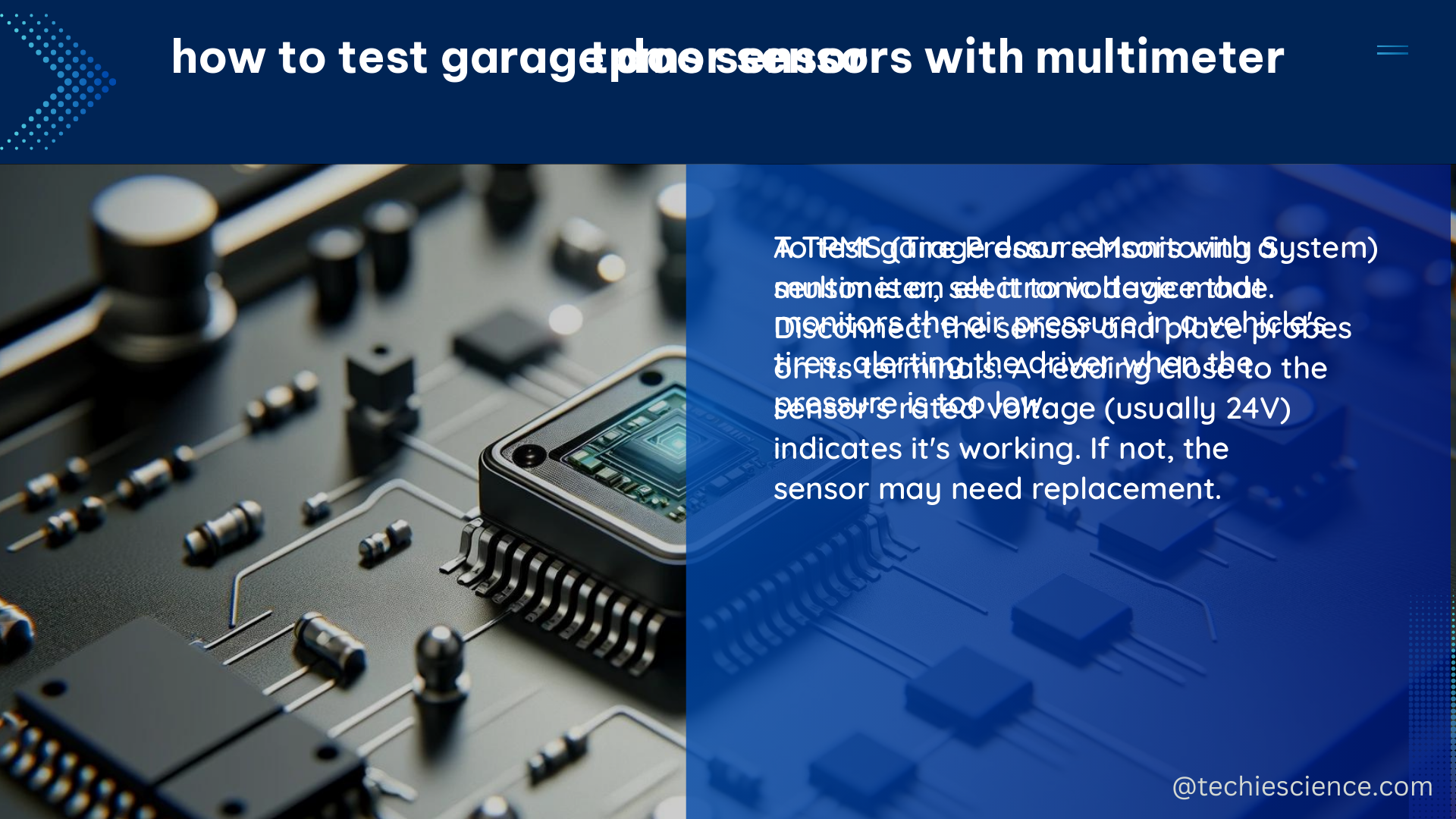TPMS (Tire Pressure Monitoring System) sensors are essential components in modern vehicles, responsible for monitoring the pressure and temperature inside the tires. These sensors transmit real-time data wirelessly to the vehicle’s onboard computer, enabling it to alert the driver when the tire pressure falls below a predetermined threshold. Understanding the intricacies of TPMS sensors is crucial for maintaining optimal tire performance, fuel efficiency, and overall vehicle safety.
The Accuracy Debate: TPMS Sensors vs. Manual Tire Gauges
The accuracy of TPMS sensors is a topic of ongoing discussion among car owners. While some believe that TPMS sensors are not as precise as manual tire gauges, others argue that they are designed to serve as warning devices rather than precision measuring instruments. The reality is that the accuracy of TPMS sensors can vary, with some sensors being within 2-3 lbs per square inch (PSI) of a handheld pressure gauge, while others may have a wider tolerance.
It’s important to note that TPMS sensors are calibrated during the manufacturing process and cannot be adjusted afterwards, except by replacing them with new units. These sensors are primarily designed to detect leaks in the tires and alert the driver, rather than providing exact tire pressure measurements.
Technical Specifications: Wireless Communication and Battery Life

TPMS sensors utilize wireless communication to transmit data to the vehicle’s onboard computer. They typically operate on the 433 MHz or 315 MHz frequency bands, which allow for a range of approximately 30-50 feet. This wireless technology enables the sensors to communicate with the vehicle’s systems without the need for physical connections.
In terms of battery life, TPMS sensors are designed to have a lifespan of around 5-10 years. This extended battery life is achieved through the use of low-power electronics and efficient power management strategies. However, it’s important to note that the actual battery life may vary depending on factors such as the sensor’s usage patterns, environmental conditions, and the vehicle’s driving conditions.
Programmability and Diagnosis: DIY TPMS Management
One of the key advantages of TPMS sensors is their programmability and the ability to diagnose them at home. Car owners can use handheld OBD-II readers and specialized TPMS programming tools to write new TPMS codes into the vehicle’s onboard computer. This feature allows for easy swapping between summer and winter wheelsets without the need for a professional service.
These TPMS programming tools can be used to perform various tasks, such as:
- Sensor Activation: Activating and deactivating TPMS sensors to accommodate changes in wheel and tire configurations.
- Sensor Relearning: Relearning the TPMS sensor IDs when replacing or rotating tires.
- Sensor Diagnostics: Checking the status and health of TPMS sensors, including battery life and signal strength.
- Sensor Reprogramming: Updating the TPMS sensor settings, such as pressure thresholds and temperature limits.
By leveraging these DIY TPMS management tools, car owners can ensure that their tires are always maintained at the correct pressure, improving fuel efficiency, safety, and tire longevity.
Sensor Types and Compatibility
TPMS sensors come in various types, each designed to work with specific vehicle models and wheel configurations. The most common TPMS sensor types include:
- Direct TPMS: These sensors are mounted directly on the wheel rim and measure the tire pressure and temperature directly.
- Indirect TPMS: These sensors use the vehicle’s antilock braking system (ABS) to detect changes in wheel speed, which can indicate a loss of tire pressure.
- Hybrid TPMS: These sensors combine the features of both direct and indirect TPMS, providing a more comprehensive tire pressure monitoring solution.
When replacing or upgrading TPMS sensors, it’s crucial to ensure compatibility with the specific make, model, and year of the vehicle. Using the wrong TPMS sensor can result in compatibility issues, sensor malfunctions, and even the illumination of the TPMS warning light on the dashboard.
Maintenance and Troubleshooting
Proper maintenance and troubleshooting of TPMS sensors are essential for ensuring their reliable operation. Some key maintenance and troubleshooting tips include:
- Sensor Replacement: TPMS sensors have a limited lifespan and may need to be replaced periodically, typically every 5-10 years or when the battery is depleted.
- Sensor Inspection: Regularly inspect the TPMS sensors for any physical damage, corrosion, or debris buildup that could affect their performance.
- Sensor Recalibration: When replacing tires or wheels, the TPMS sensors may need to be recalibrated to ensure accurate pressure readings.
- Sensor Diagnostics: Use TPMS programming tools to diagnose any issues with the sensors, such as low battery, signal interference, or sensor malfunctions.
- Sensor Software Updates: Check for and install any available software updates for the TPMS system to ensure optimal performance and compatibility with the vehicle’s systems.
By following these maintenance and troubleshooting guidelines, car owners can ensure that their TPMS sensors continue to function reliably and provide accurate tire pressure monitoring.
Conclusion
TPMS sensors are essential components in modern vehicles, playing a crucial role in maintaining tire safety, fuel efficiency, and overall vehicle performance. While the accuracy of these sensors may vary, they are designed to serve as warning devices rather than precision measuring instruments. By understanding the technical specifications, programmability, and maintenance requirements of TPMS sensors, car owners can leverage these systems to their full advantage and ensure the optimal performance of their vehicles.
References:
– TPMS Sensor Accuracy Debate on Corvette Forum
– TPMS Sensor Overview on Tires-Easy
– TPMS Sensor Discussion on Hacker News

The lambdageeks.com Core SME Team is a group of experienced subject matter experts from diverse scientific and technical fields including Physics, Chemistry, Technology,Electronics & Electrical Engineering, Automotive, Mechanical Engineering. Our team collaborates to create high-quality, well-researched articles on a wide range of science and technology topics for the lambdageeks.com website.
All Our Senior SME are having more than 7 Years of experience in the respective fields . They are either Working Industry Professionals or assocaited With different Universities. Refer Our Authors Page to get to know About our Core SMEs.